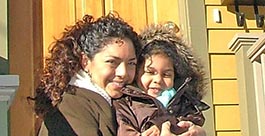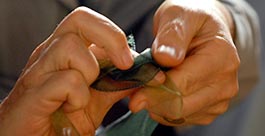Why Walkability is a Priority for Community Development
More and more research continues to confirm that walkable neighborhoods are better for the environment, the local economy and the health of a neighborhood’s residents. Yet, low income communities of color are often less walkable than others. Walkability is a health equity issue given that walkable neighborhoods have lower rate of chronic disease and given the alarming recent spike in pedestrian deaths in the region. Experts in urban planning, community development and public health are therefore coming together to recognize and promote the importance of walkability.
In Dorchester, Codman Square Neighborhood Development Corporation (CSNDC) in partnership with the Talbot-Norfolk Triangle Neighbors United (TNTNU) was inspired to improve the walkability of their neighborhood from a survey of over a thousand residents in the Talbot-Norfolk area which revealed that residents’ main concerns with the neighborhood included health and environmental sustainability. They were particularly interested in incorporating more green space and opportunities for active transit (biking and walking) in the streets of the neighborhood, along with other environmental sustainability measures. CSNDC and TNTNU, therefore, decided to turn the neighborhood into the “Eco Innovation District,” with funding from the Barr foundation with the goal of promoting transit oriented development in the neighborhood and along the Fairmount Line.
“If you afford someone the opportunity to live in an open space, an open beautiful space, it improves their lives overall” said Tiffany Cogell, a healthy neighborhood champion of the Talbot-Norfolk triangle area. “I believe that low income people are just as deserving of a beautiful place to live as anyone else”
The neighborhood currently faces major safety issues. It is a common cut-through area for drivers who speed through the neighborhood to get to and from downtown Boston. As a result, multiple crashes and a bike death occurred in the area last year. In addition, a major street in the neighborhood, New England avenue, has absolutely no sidewalks. Residents are therefore limited in how they can move around in their neighborhood. As a result, while residents may take a short trip to the corner store by walking or biking, they are unlikely to make longer trips due to lack of walkability in the neighborhood.
“Getting people in the neighborhood out and walking makes them pay attention to the built environment” said Cogell. “People notice when children have to cross an unsafe street to go to school. We have allowed the city to forget our neighborhood by not paying attention.”
To address safety issues, CSNDC has worked with the Boston Transportation Department to designate a slow zone that will include more reduced speed signage, and speed bumps to slow drivers through the neighborhood. CSNDC has also gotten funding from the Boston Public Health Commission to hire residents as Healthy Community Champions, like Cogell. The Healthy Community Champions, mostly mothers from the neighborhood, have conducted a survey of 130 residents about health and mobility. They are now consolidating the findings and using them to inform future work in the neighborhood.
CSNDC also relies on the advocacy and technical assistance of organizations like WalkBoston and Liveable Streets who help them scope out projects and helped advocate on their behalf to the Department of Transportation. As Dave Queeley, Eco-Innovation Fellow at CSNDC has noted,
“it takes a village” to improve a neighborhood and create change.
To help communities around the state understand how to create their own “villages” to boost walkability, WalkBoston and the Mel King Institute teamed up earlier this year to host a workshop on “Promoting Walkability: Creating Safe and Active Neighborhoods.” The workshop, which took place in Codman Square included an overview of the benefits and possible infrastructural improvements to enhance walkability from WalkBoston, and case studies from projects around Boston including the Eco Innovation district along with the following projects:
- Mike Chavez an architect and Enterprise Rose Fellow with the Fairmount CDC Collaborative, spoke about the Collaborative’s efforts to promote affordable housing and smart design in the neighborhoods of Roxbury, Dorchester, Mattapan and Hyde Park.
- Marah Holland, the Health Equity and Wellness Coordinator for Roxbury in Motion and the Madison Park Development Corporation shared stories of community-driven efforts to create Complete Streets in Roxbury that use built environment improvements that improve pedestrian conditions as critical tools to improve social equity, public safety and community health.
While WalkBoston and the Mel King Institute successfully concluded their workshop, the broader conversation on walkability and building more sustainable and equitable communities is by no means over.









